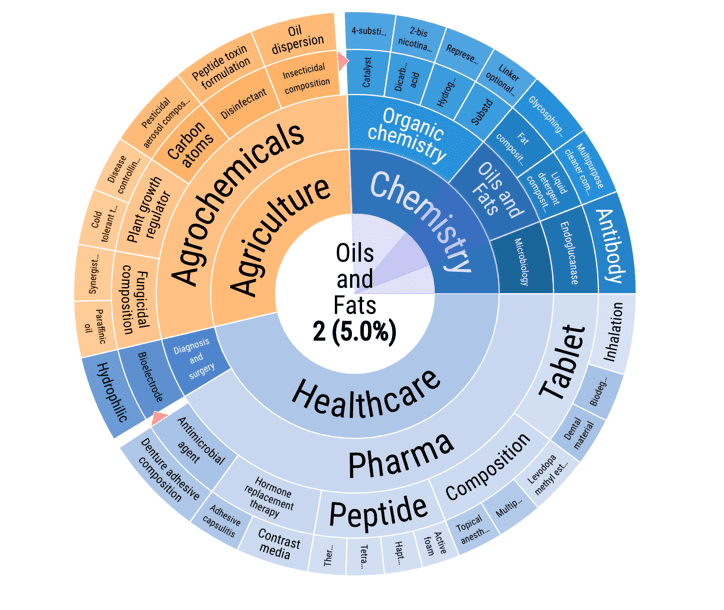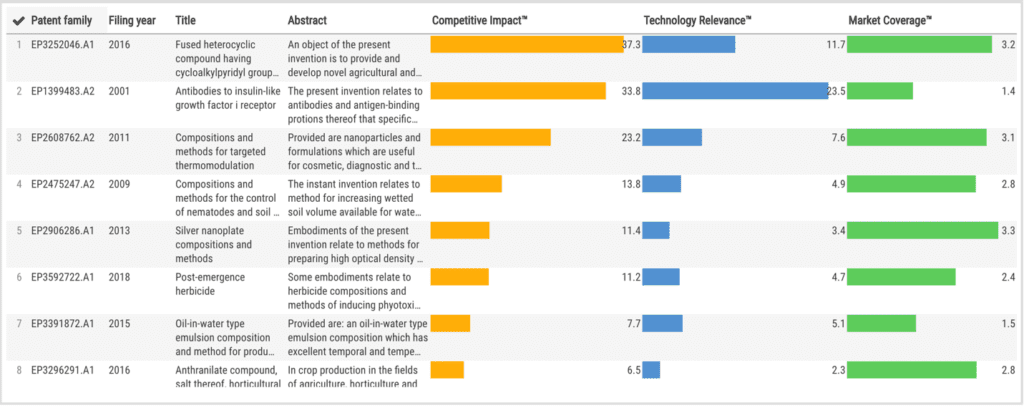Must-Have Patent Visualization Tools

It may be a cliché to say that “a picture is worth a thousand words,” but the patent data visualization tools that are now available to law firms suggest that the old saying may also be an understatement. The LexisNexis® PatentSight® innovation analytics platform allows users to display and interpret patent data from patent authorities all over the world, and provides users with proprietary patent metrics that help them understand patent information with unprecedented depth. With dozens of visualization tools to choose from, law firms can maintain an edge over their competition, improve their operations and provide detailed analyses of client patent portfolios. Here are two PatentSight patent visualization tools all law firms should know about.
Patent sunburst charts
Need a way to quickly understand the types of technologies that are covered in a group of patents? PatentSight sunburst charts provide users with a method for quickly and intuitively understanding the makeup of a given patent portfolio, including the categories of inventions that are protected and in what proportions. Law firms can use this visualization tool by creating sunburst charts for internal audits that show which technological fields they have been giving the most attention, which in turn allows for better resource budgeting and targeted team training. Sunburst charts can also be created from the patent portfolios of clients and their closest competitors to help clients determine their relative strengths and weaknesses, as well as where they should direct their research and development efforts.

Advanced patent family charts
The PatentSight advanced patent family charts are one of the best ways to use visualization tools to extract and present much of the detailed information about a patent collection all at once. PatentSight users need only search for the name of a patent owner, and they can view a table displaying a customizable variety of information for each patent family in the owner’s patent portfolio. The chart presents bibliographic and geographic information alongside proprietary metrics. In a nutshell, the metrics are:
- Technology Relevance: the number of forward citations a patent family has received over time.
- Market Coverage: the size of the markets in which a patent is actively protected in or in which a patent is filed for protection.
- Competitive Impact: The two indicators, Technology Relevance and Market Coverage are used to derive individual patent quality or Competitive Impact. This value is calculated for each patent family in the portfolio. It signifies the average quality of individual patent families.
Advanced patent family charts enable users to evaluate which patents within a portfolio are the most valuable, which factors contribute to their importance and which patent authorities have granted protection to the patent owner.

Visualization tools summary
If a picture is worth a thousand words, then PatentSight visualization tools are worth much more. PatentSight sunburst charts provide a way for users to understand the kinds and proportions of patentable subject matter in a patent portfolio. Advanced patent family charts present users with a way to digest a wide range of patent insights simultaneously. There are dozens of ways to visualize patent data using PatentSight, and each PatentSight visualization is an additional tool law firms can use to improve their performance, develop a competitive edge and better serve their patent clients.
Learn more about PatentSight.
See how to transform patent data into intelligence.
High quality data is a prerequisite for reliable patent analytics. Download the Handbook for Patent Data Quality to find out how PatentSight curates their patent database to enable users to extract reliable and actionable insights.

Get actionable insights for strategic decision making
Want to become more effective at managing your patent portfolio, identify worldwide relevant patents and technology trends, assess the competitive landscape, and find partners and licensing opportunities?
